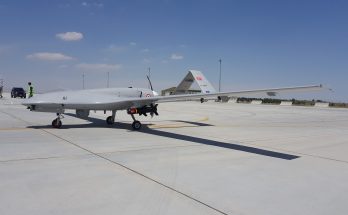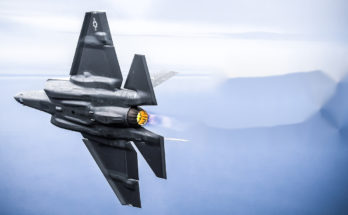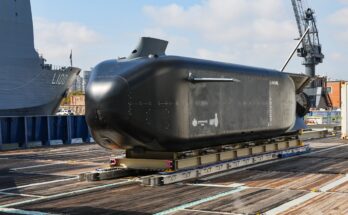The U.S. Navy has issued a draft Request for Proposals for its Large Unmanned Surface Vessel program. A final RFP is anticipated in the fourth quarter of FY19.
“The LUSV will be a high-endurance, reconfigurable ship able to accommodate various payloads for unmanned missions to augment the Navy’s manned surface force,” the pre-solicitation reads. “With a large payload capacity, the LUSV will be designed to conduct a variety of warfare operations independently or in conjunction with manned surface combatants. The LUSV will be capable of semi-autonomous or fully autonomous operation, with operators in-the-loop (controlling remotely) or on-the-loop (enabled through autonomy).”
The LUSV will be between 200 and 300 feet long and have a full displacement of around 2,000 tons, making it about the size of a corvette. The service wants the vessel to be based on a commercial ship design with the ability to utilize modular payloads. LUSVs will be able to operate autonomously, or semi-autonomously with a human operator in the loop.
The Pentagon’s Strategic Capabilities Office has already completed some LUSV development work through its Ghost Fleet Overlord program. The first vessels will be based on Offshore Support Vessels.
The service is using research and development funding to acquire several Medium Unmanned Surface Vessels (MUSVs) and LUSVs. The unmanned vessels will serve as a foundation for gaining knowledge about how to best incorporate these types of systems into the Fleet. They will not be a part of the battle force initially, but that could change down the road. Currently, the Navy anticipates using MUSVs primarily as mobile sensor platforms gathering intelligence, while LUSVs could be outfitted with weapons and capable of conducting a variety of strike missions.
The service has already been experimenting with the Sea Hunter MUSV, which started off as a DARPA program before transitioning to the Office of Naval Research in January 2018.

Sea Hunter Unmanned Surface Vessel. Source: DARPA
The FY20 budget included $372.5 million for a pair of LUSVs, and the Navy plans to buy a total of 10 vessels between FY20 and FY24. The House version of the FY20 defense appropriations bill recommended cutting one of the two vessels requested in FY20, but that legislation was drafted prior to a subsequent budget deal that will increase the defense topline compared to the House bill. The Senate has not drafted its version of the FY20 defense appropriations bill.
As editor of International Military Markets, North America, Shaun has cultivated a deep understanding of the vast defense markets in the United States and Canada. Shaun's perspective on defense procurement and budget issues has been cited in a variety of defense periodicals, including Defense News and National Defense Magazine. Further, Shaun played an integral role in the development of Forecast International's U.S. Defense Budget Forecast product, which offers an unprecedented level of insight into the Pentagon's acquisition budget. In addition to providing original analytical content for the U.S. Defense Budget Forecast, Shaun oversees an internal defense budget forecasting process involving Forecast International's team of skilled systems analysts following release of the DoD's annual budget request. Shaun is also in charge of managing Forecast International's Weapons Inventory database.




